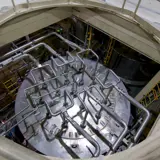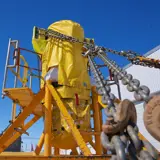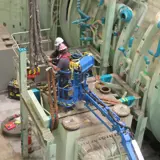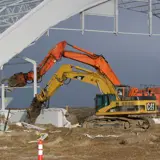Radioactive Waste Management Complex (RWMC)
Since the 1950s, the Radioactive Waste Management Complex (RWMC) has been used to manage, store, and dispose of waste contaminated with radioactive and hazardous elements generated in national defense and research programs. The RWMC comprises 177 acres* and includes three main areas: the operations and administration area, the Subsurface Disposal Area, and the Transuranic Storage Area. Today, about 700 site workers are tasked with meeting the following major cleanup milestones:
- Shipping the balance of 65,000 cubic meters of above-ground transuranic waste from the Advanced Mixed Waste Treatment Project to the Waste Isolation Pilot Plant in New Mexico
- Shipping transuranic and hazardous waste exhumed from the Accelerated Retrieval Project to offsite repositories
- Repackaging of drums containing contaminated sludge for shipment to the Waste Isolation Pilot Plant
- Constructing a landfill cover over the 97-acre Subsurface Disposal Area
- Removing legacy buildings and closing the Advanced Mixed Waste Treatment Project, a 56-acre Transuranic Storage Area located in the southern section of RWMC
Beginning in 2005, the Idaho Cleanup Project began removing plutonium-contaminated filters, graphite molds, sludges containing solvents and oxidized (depleted) uranium from seven pits to protect the environment, especially the Snake River Plain Aquifer. In 2008, DOE, the state of Idaho, and the Environmental Protection Agency signed a Record of Decision to exhume and repackage 7,485 cubic meters of targeted waste from a combined area of 5.69 acres within the pit areas. Targeted waste retrieved, packaged, and certified for disposal will ultimately be shipped out of Idaho. Nine individual excavation projects have been completed since 2005, most notably Pit 9. Exhumation within the ninth enclosure was completed in December 2021. The six remaining enclosures will be removed by December 2024.











